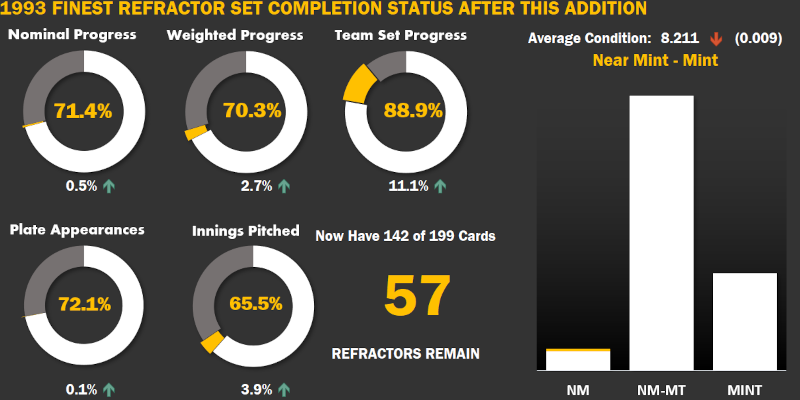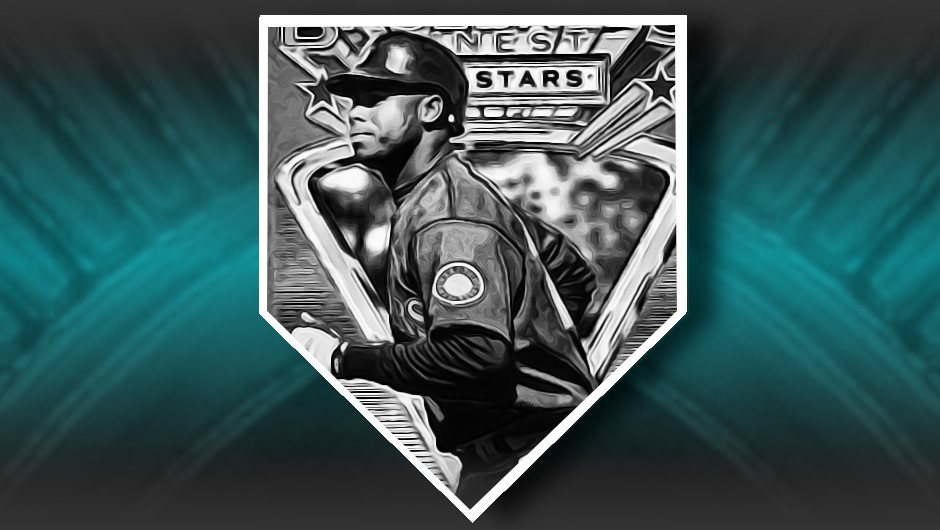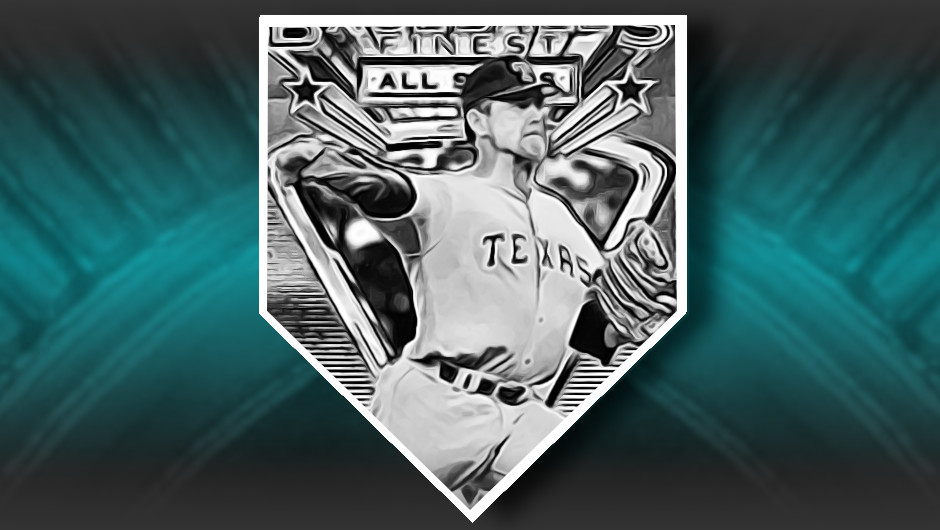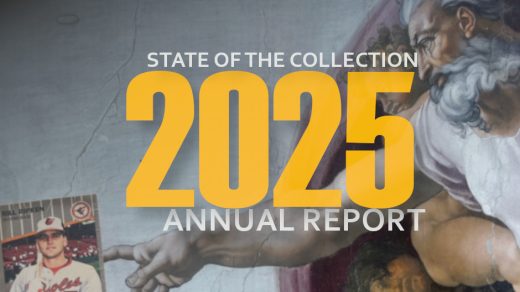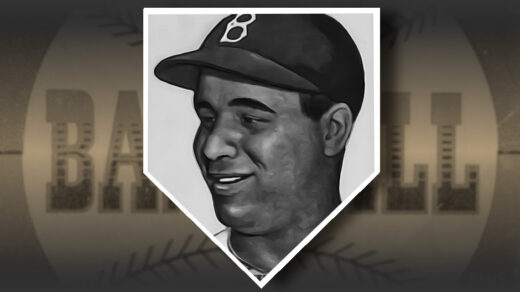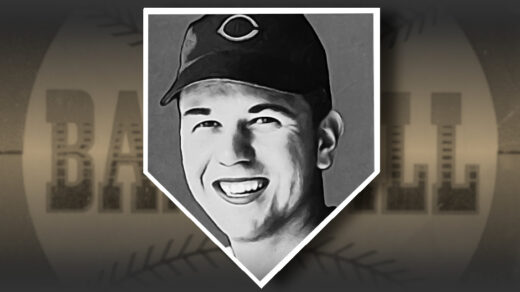Wee Willie Keeler famously instructed hitters hoping for success to “hit ’em where they ain’t.” The idea was that a ball hit to where there are no nearby fielders would fall safely for a hit and stand a good chance of allowing any runners to take extra bases. When presented with this bit of baseball wisdom Babe Ruth, or at least his facsimile in the movies, famously added “Well they ain’t over the fence so that’s where I hit ’em.” That attitude is what made Ruth great (you know, besides actually hitting home runs).
Nolan Ryan approached every opposing batter a similarly simple plan: The best way to get to the next batter is to strike out the current one. It didn’t matter if there were baserunners looking to steal a base, Ryan was going to use the same slow, high-kicking delivery to generate maximum power behind his pitch. It didn’t matter if inducing a soft grounder would generate a double play, he was going to try and blow three 100 mph strikes right through the batter’s flailing bat. He threw inside at batters when he didn’t have to, almost relying on reputation alone to win pitching battles before he and the batter even truly squared against each other. He threw 235 pitches in a single 13-inning outing in 1974. The opposing pitcher, Luis Tiant, pitched 14 innings and used “only” 163. A freak first inning injury in a 1990 game saw Ryan continue to pitch the rest of a game with blood dripping down his face and jersey in what must be the most terrifying sight ever seen by a batter.
How best to relay the futility felt by those facing Ryan on the mound? It’s not the 100+ career wins above replacement, the pile of no-hitters, or the 5,714 career strikeouts. The full impact of trying to take on “The Ryan Express” is best described by opponents’ collective .200 batting average against him. That’s right, all of Major League Baseball could hit at the Mendoza Line when facing him. Only 23 pitchers in MLB history have ever generated a lower opponent batting average. Of these, almost all are short relievers who do not face fatigue in generating their stats. Only one other pitcher (Herb Score) started over 100 games with a lower average. Ryan set his mark pitching in five times as many games as Score, who retired early due to injury.
Ryan maintained this performance over the course of his career. He posted a sub .200 opposing batting average in three of the four decades in which he played. Players would find themselves batting below .200, retiring, and then watching their own children grow up to struggle to hit .200 against the same pitcher. Ryan struck out 8 MLB father/son combinations.
Random Ryan Express Facts
Next to watching batters spin around and fall out of the batter’s box with the effort of swinging and missing at a Ryan fastball, I find the best way to enjoy his career is to repeat seemingly random lists of his feats. There’s a satisfying Rain Man quality to the stats on the back of any Nolan Ryan baseball card.
- Nolan Ryan’s all or nothing approach led to a tremendous, record setting pile of walks over the course of his career. The 2,733 bases on balls that he gave up are nearly 1,000 more than the runner up. Despite this, his Walks+Hits per innings pitched (WHIP) was still a miniscule 1.25. It’s almost as if the walks didn’t matter because the next guy coming to the plate wasn’t going to be able to do anything about it.
- Ryan faced Roger Maris, Barry Bonds, Mark McGwire, and Sammy Sosa. Collectively they hit .111 against him with 19 strikeouts and not a single home run.
- Never a good hitter, Ryan generated a career average of .110 when it was his turn at the plate. However, he did manage to hit .216 in 1981, a mark that was 31 points higher than how the rest of MLB batters fared against him that season.
- He led MLB in strikeouts in the 1970s (2,678) and the 1980s (2,167). His 1970s total alone would be good enough to rank 25th on the career strikeout list, beating out the lifetime totals of strikeout artists like Bob Feller.
- He struck out 1,183 different batters. There have only been 284 other pitchers with that many career strikeouts. If Ryan only received credit for 1 strikeout per batter he would still have a higher total than the lifetime work of Dizzy Dean.
- The current active career strikeout leader is Max Scherzer with 3,300. If he continued to play his career average of 185 innings per season and kept up his career pace of 10.7 strikeouts per 9 innings, the nearly 40 year-old Scherzer would still need another 11 years of play to come close to catching up with Ryan.
- Ryan struck out more than 25% of all batters faced. This isn’t just on the basis of at-bats, it is based on total plate appearances. Ryan’s career strikeout rate is 53 points above his opponents’ batting average. 38% of batters ended their appearance without putting the ball in play.
- Bert Blyleven and his 3,701 career strikeouts rank 5th on the all-time list. Despite this, there is an emmense gulf between Blyleven and Ryan’s totals. The distance between Blyleven and Ryan is the same as between Blyleven and the total of 152nd-ranked Bruce Hurst.
- He recorded his 3,000th strikeout at age 33 in 1980. From that point forward he proceeded to lap the total strikeouts of Warren Spahn, Bob Feller, Jim Palmer, Juan Marichal, Tom Glavine, and Don Drysdale. His career record could have been reset to zero and he would still rank 27th in MLB history.
- He holds the records for most no-hitters, 1-hitters, and 2-hitters since the turn of the previous century. Norm Cash once tried to use a table leg to bat against Ryan in one of those no-hitters.
- Ryan pitched 23 games in which he took a no-hitter into the 7th inning. Since the advent of the expansion era the closest anyone else got to this number is 8 (Justin Verlander and Randy Johnson).
- Ryan holds the record for oldest pitcher to throw a no-hitter. He also holds second place on the same list.
This list could go on and on, but you get the point.
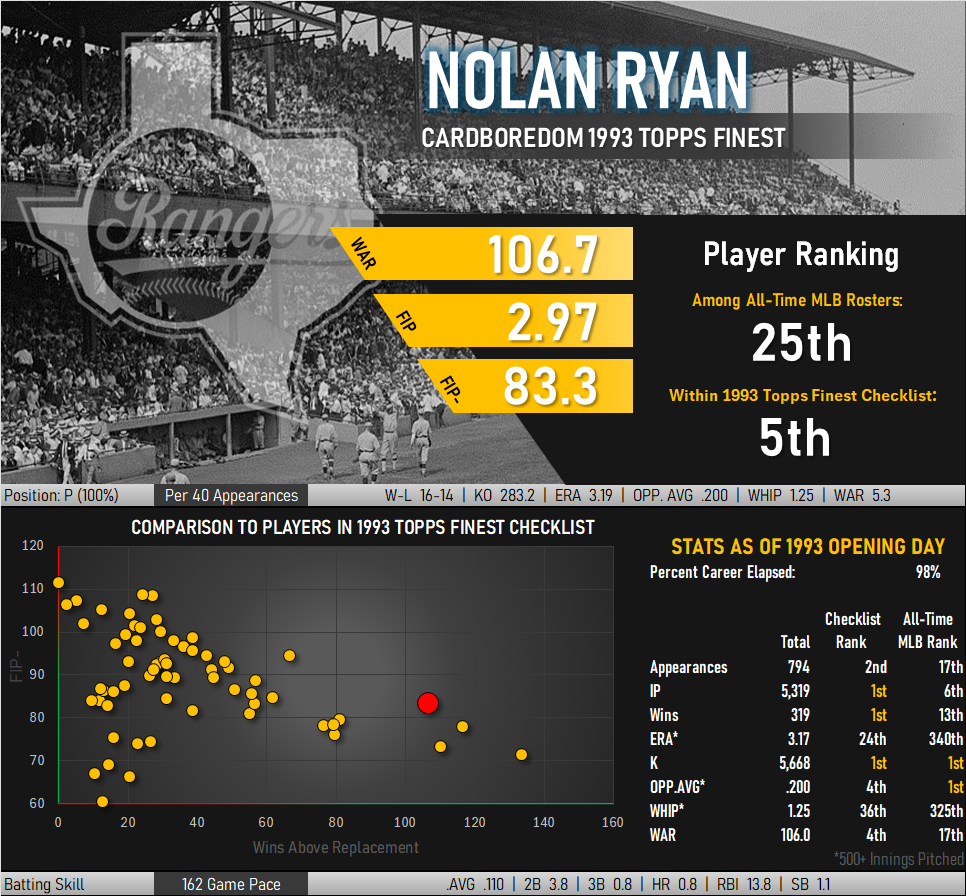
1991 Donruss Elite
Ryan was one of the 10 subjects appearing in the 1991 Donruss Elite insert set. With production runs 25-50% lower than the 8 “regular” Elites, Nolan Ryan and Ryne Sandberg cards were the most sought after in the set. Ryan’s card features artwork by Dick Perez rather than a photograph. The back of the card says the original painting was given to Ryan in a pregame ceremony, one in which I can imagine Ryan thinking, “What am I going to do with this?”
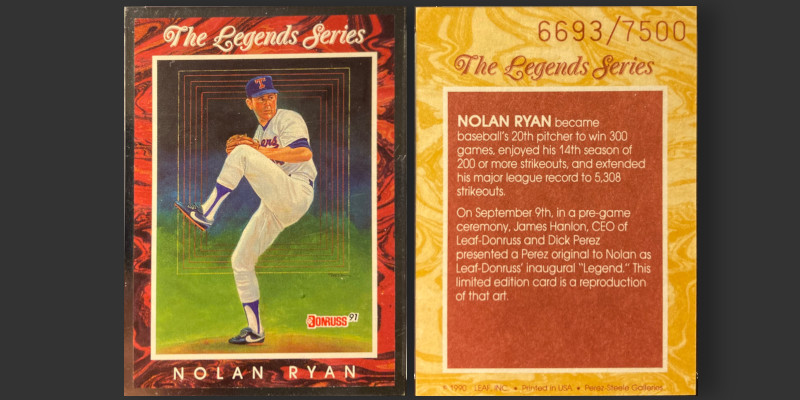
Ryan actually faced each of the other ’91 Elite constituents over the course of his career. Together they went head-to-head 334 times, resulting in 11 home runs, a batting average of .250, and 79 strikeouts. George Brett and Andre Dawson represented nearly two-thirds of these appearances. The group connected for home runs against Ryan (11 in total) at nearly twice the rate of the general baseball population. Strikeouts ended 24% of these appearances (vs. 25% of Ryan’s lifetime totals) while he exerted better control (10% walk rate vs. 12% lifetime). George Brett and Barry Bonds did well, while Rickey Henderson and Matt Williams looked silly in the batter’s box. Amazingly it was Doug Drabek, the only other pitcher in the set, who did the best facing Ryan. Drabek went 1 for 3 with no strikeouts in their matchups.
1993 Finest Refractor
I still have to pinch myself that this card is part of my collection. It was always the key refractor, one that for most of its history was the toughest to find available. Cards of Griffey and Ripken have (occasionally) commanded higher prices but have always been available as long as your wallet was big enough. Ryan cards, on the other hand, seem to be tightly held by collectors looking for the ultimate card from his final season. Player collectors snap up the few that become available.
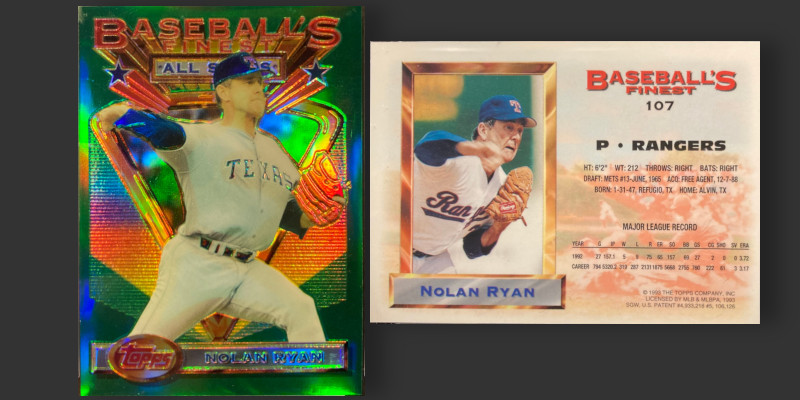
I knew from experience that the Ryan refractor doesn’t stay listed for sale very long. Talking with another collector, he told me of the story of how he came across the example that now resides in his own in-progress set. He contacted another collector who said he had several available and the two agreed to meet to inspect the card and discuss price. What followed was the seller laying out a dozen Ryan cards in a range of conditions. Great. There are player collectors and minor hoarding to contend with when chasing this card.
I snagged my copy via one of the big auction houses. It had been consigned along with the Griffey card that now resides in my collection, and both had been initially presented to the auction house as raw, ungraded cards by the same consignor. The pair are sequentially numbered after being submitted together for grading in preparation for the sale.
